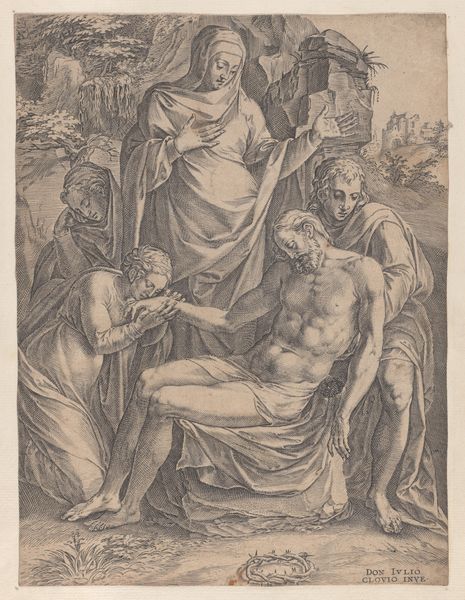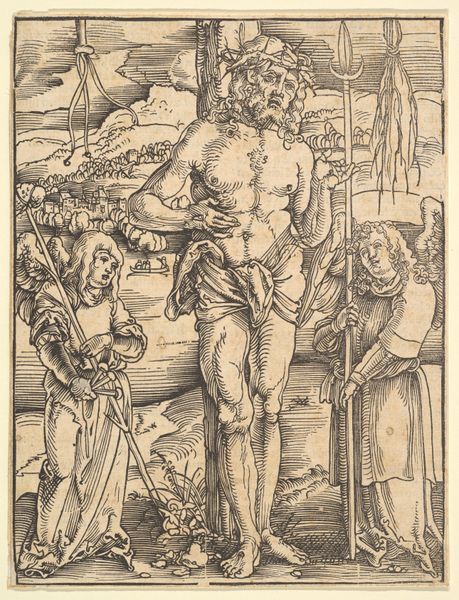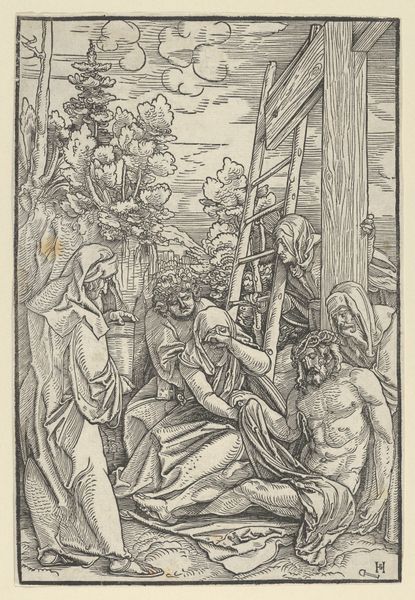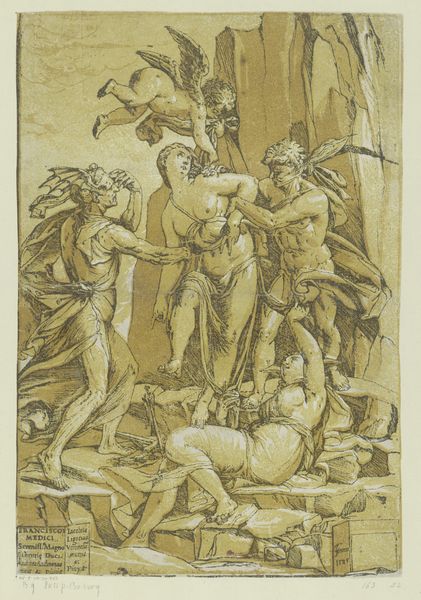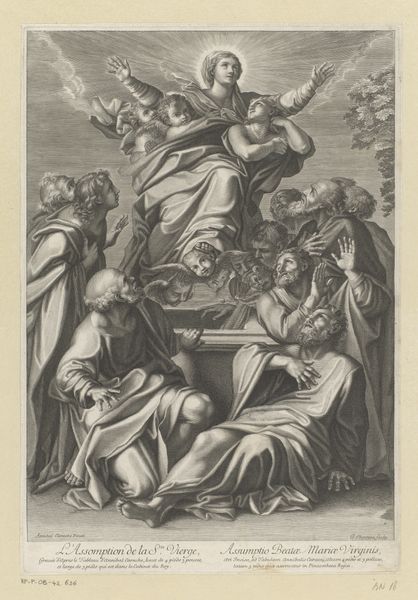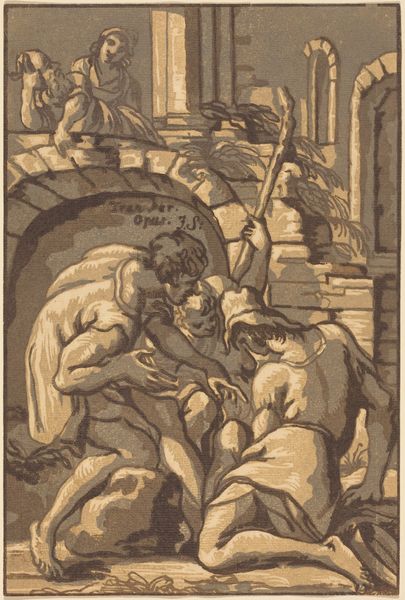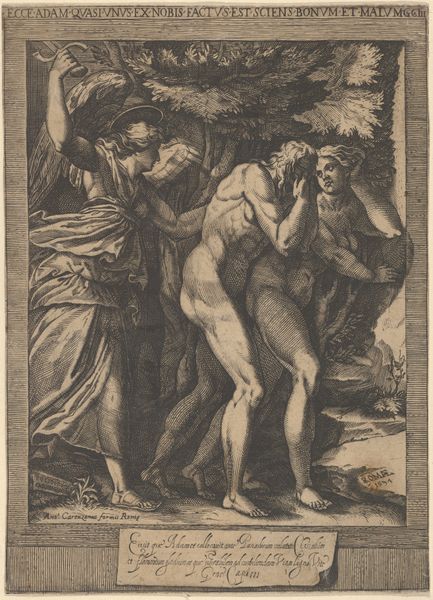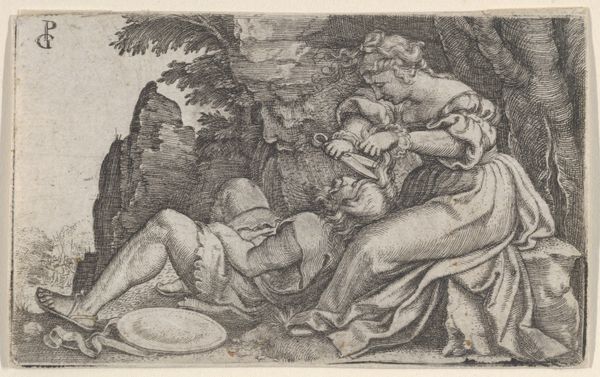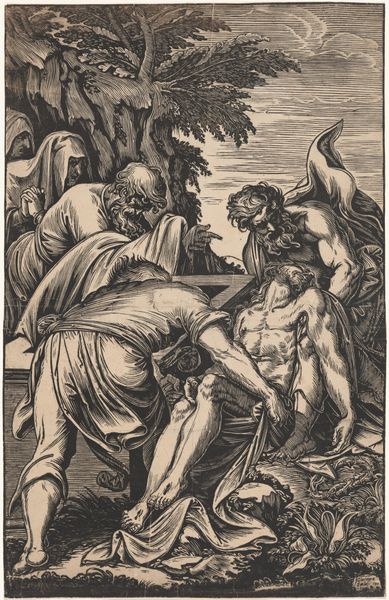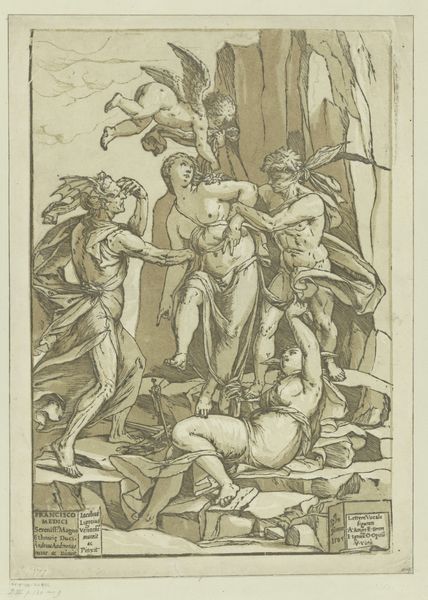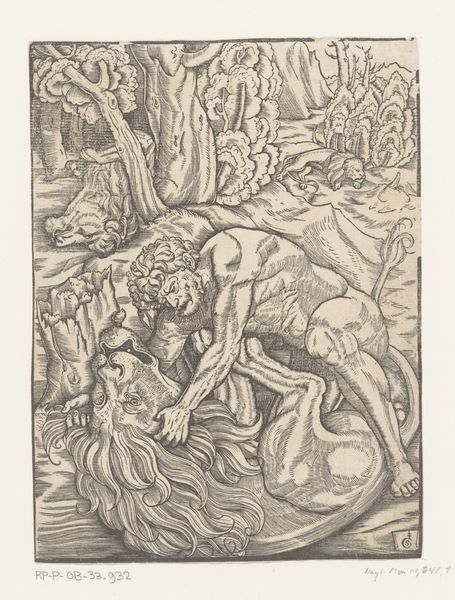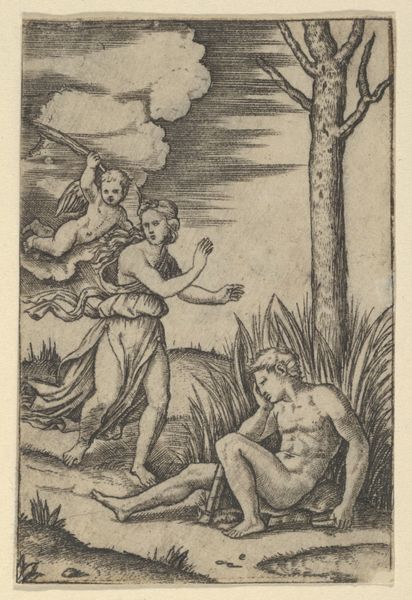
print, intaglio, engraving
#
narrative-art
#
baroque
# print
#
intaglio
#
figuration
#
history-painting
#
italian-renaissance
#
engraving
Dimensions: height 685 mm, width 440 mm
Copyright: Rijks Museum: Open Domain
Curator: This is Andrea Andreani's "Entombment of Christ," made sometime between 1568 and 1629. As an intaglio print, it reverses the image created. This act of replication is telling about production, consumption, and accessibility during this time. Editor: It's incredible to see so much detail achieved with engravings. I'm intrigued by how Andreani used the printmaking process to depict such a weighty religious scene. How would you interpret this work through the lens of its materiality and production? Curator: Notice how printmaking made this sacred scene, typically reserved for the elite through painting, widely available. We should examine how intaglio engravings became tools that influenced faith, belief, and possibly political persuasion during the Renaissance. Editor: That’s fascinating. I hadn’t considered the socio-economic implications of the printing process itself. How do the materials used and their manipulation affect the impact of the artwork? Curator: Consider the paper and ink, humble materials elevated through skilled labor. The matrix for this print, likely wood, could produce potentially hundreds, if not thousands, of impressions, exponentially expanding access. So, how does the mass-produced quality of prints impact its understanding and importance of religious subject matter? Editor: It’s interesting to consider how repeated reproduction could democratize art but maybe also dilute the perceived sacredness. The labor put into producing multiples challenges the idea of art as a unique precious object, that is really something to think about. Curator: Precisely. Focusing on its material existence urges us to explore the economic and cultural contexts of the era, questioning the traditional value assigned to "high" art versus craft. What can we learn about society and the cultural function of art from a deep examination of material and method? Editor: This approach truly opens my eyes to aspects I’d never considered. I see that every stage of production influenced its cultural importance, not just the finished image, but the labour involved, its materiality and means of replication, Curator: And how, unlike painting which is always fixed to a wall, prints have a fascinating opportunity to migrate and permeate society. This challenges our understanding of Renaissance Art.
Comments
No comments
Be the first to comment and join the conversation on the ultimate creative platform.
